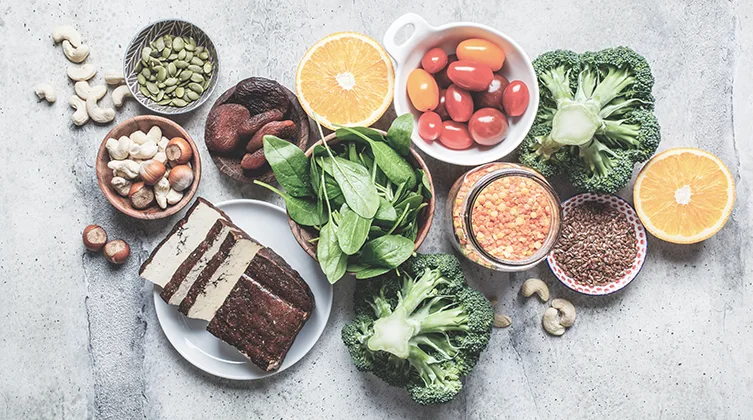Iron deficiency is one of the more commonly known consequences of inadequate nutrition. When people state they have been feeling a deep fatigue, I often hear the respondent suggest: “Maybe you need some more iron? Eat some meat.” And this is justified as deep fatigue is one of the myriad symptoms of iron deficiency and anaemia, and meat is a rich source of heme iron.
The Physiology:
When iron levels falter, the body struggles to synthesize haemoglobin. Iron is an important component of this blood protein and is required to transport oxygen around the body. When iron is low, the body’s ability to utilize oxygen is compromised. Without oxygen, the body cannot sufficiently produce energy (ATP; adenosine triphosphate), as oxygen plays an important role in capturing electrons at the end of the electron transport chain in cellular respiration*.
*Cellular respiration is the encompassing process of making energy! It is essential for life.
Now you know the physiological importance of iron… how do we actually get iron?
The body has an impeccable ability to store iron! Indeed, unborn babies get all the iron they need from the placenta to support their first few months of life on earth. After that it is important to introduce iron-containing foods.
Food is the original source of iron. And it actually presents itself in two main forms:
- Heme iron from animal sources, and
- Non-heme iron from plant-based sources.
On average, heme iron contributes 10% of total iron requirements daily (if you consume meat). That means a huge proportion of iron is actually coming from plant-based foods.
IF YOU ARE LOOKING FOR WAYS TO IMPROVE YOUR IRON INTAKE, BUT DON’T WANT TO CONSUME ADDITIONAL ANIMAL PRODUCTS, HERE ARE A FEW HEALTHY PLANT-BASED SOURCES OF IRON:
Potatoes – I’m pretty excited about this one because I love potatoes! They’re super satiating and satisfying, and a great source of iron. Just consider leaving the skins on. One medium baked potato with skin offers almost 2 mg of iron.
Leafy green vegetables – most people do not consume enough of the leafy green nutrient powerhouses. When it comes to iron, cooked spinach alone offers almost 6.5 mg per cup. An awesome way to get this sort of goodness into your body is my fiancé’s spinach mash, which he learnt from his talented mumma. I’ll need to get the recipe up here for you sometime in the near future.
Whole grains – especially iron-fortified whole grains are a great option for providing iron. Just opt for the minimally refined varieties.
Pinto beans – pinto beans are a wonderful source of iron, as well as dietary fibre, protein and other essential nutrients. Add them to soups, stews, salads and even curries!
Tofu – at approximately 2.15 mg of iron per quarter-block, tofu is a great plant-based choice.
Parsley – parsley is surprising high in iron. One cup of freshly chopped parsley offers approximately 3.7 mg of iron. There are endless ways to enhance your meals with fresh parsley.
Nuts – nuts are rich in minerals. When it comes to iron, cashews, hazelnuts and pistachios reign supreme.
Seeds – seeds are another excellent source of iron. Incorporate pumpkin seeds, sesame seeds, chia seeds and so forth into your diet.
Dried fruits – who knew that you could get iron from something as delicious and sweet as dried fruit! Dried peach halves, followed by prunes, apricots and raisins are some of the best sources. Just keep in mind the high sugar and calorie content of these goodies and enjoy sparingly.
Spirulina – this more familiar deep green powder is actually made from a blue-green algae called cyanobacterium. Spirulina is incredibly nutrient dense and is an excellent source of amino acids, B vitamins, and the mineral, iron. Some people drink it straight, add it to smoothies, among many other creative uses.
A final, little note about boosting your iron with plants:
Avoid drinking tea with meals, as this can inhibit iron absorption, and consider complimenting iron-containing foods with vitamin C-rich foods, to improve your iron status.
Iron is toxic!
The body has no specific mechanisms to get rid of excess iron. Instead, balance is maintained by regulating the absorption of iron from food. When iron stores are low, more iron is absorbed, and vice versa.
Iron toxicity more commonly occurs when people are consuming supplements. Always be prudent about consuming supplemental iron and do so under the guidance of an appropriate health professional. Opt for boosting your levels with food and a natural approach first, unless of course your doctor recommends otherwise.





